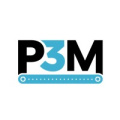Summary
Cut through the green tape
We don't push agendas. At Net Zero Compare, we cut through the hype and fear to deliver the straightforward facts you need for making informed decisions on green products and services. Whether motivated by compliance, customer demands, or a real passion for the environment, you’re welcome here. We provide reliable information—why you seek it is not our concern.
Details
Deep dive
Software Overview
"Building connected roads which lead to a better future."
Source: p3mobility.com
P3Mobility’s main software platform is designed to facilitate the deployment and management of Vehicle-to-Everything (V2X) technology. This platform enables seamless communication between vehicles, infrastructure, and other road users to enhance safety, efficiency, and mobility.
What is V2X?
V2X, or Vehicle-to-Everything, is a technology that allows vehicles to communicate with each other and with their surroundings. It enables vehicles to send and receive information not just from other cars but also from road infrastructure, pedestrians, and traffic systems. The goal is to create smarter, safer, and more efficient roads by sharing real-time data about traffic, hazards, and conditions.
For example, V2X can help cars "talk" to traffic lights to optimize flow, or alert drivers if there's a pedestrian about to cross the road who they might not see. This communication reduces accidents, traffic jams, and fuel consumption while making transportation systems more responsive and safe.
Key features
1. Traffic Signal Priority (TSP):
Purpose: Optimizes the timing of traffic signals to prioritize the passage of certain vehicles like public transit, emergency responders, or high-occupancy vehicles.
Benefits: Reduces travel times, improves road safety, and minimizes emissions by reducing vehicle idling at intersections.
2. Emergency Signal Priority (ESP):
Purpose: A subset of TSP that focuses on giving priority to emergency vehicles at intersections.
Benefits: Improves response times for emergency services by providing green lights and faster passage through congested areas.
3. Equipped Vehicle Trajectory Awareness (EVTA):
Purpose: Monitors and shares real-time data on the movement of equipped vehicles to predict and prevent collisions.
Benefits: Enhances road safety by sharing trajectory data with other vehicles and infrastructure, allowing for proactive traffic management and collision avoidance.
4. Dedicated Lane Access:
Purpose: Manages high-occupancy vehicle (HOV) lanes, toll lanes, or priority lanes for certain types of vehicles.
Benefits: Helps in controlling lane access and generating revenue through tolling or other mechanisms, while improving traffic flow.
5. Sensor Data Sharing Messages (SDSM):
Purpose: Broadcasts critical safety information between infrastructure, vehicles, and vulnerable road users (VRUs) like pedestrians and cyclists.
Benefits: Improves road safety by sharing data from sensors and camera systems to detect and communicate the presence of VRUs, even when they are out of the driver’s sight.
6. Financial and Operational Platform:
Purpose: Facilitates revenue generation for smart infrastructure projects through tolling, vehicle prioritization, and other financial models.
Benefits: Addresses funding challenges for local governments and road operators by providing tools to finance, operate, and maintain smart road systems.
7. Real-Time V2X Communication:
Purpose: Ensures continuous, real-time communication between vehicles and infrastructure to enable safer, smarter roadways.
Benefits: Reduces the likelihood of accidents and enhances traffic efficiency by allowing vehicles to “talk” to each other and to the infrastructure around them.
Addressing the Challenge of Funding Smart Infrastructure
Tolling and Dedicated Lanes
One of the core ways P3Mobility’s platform helps address funding is through Dedicated Lane Access. These lanes can generate revenue by charging fees for access, creating a continuous source of income that can be reinvested into the maintenance and expansion of smart infrastructure.
By offering dedicated toll lanes for high-priority vehicles or those willing to pay for faster passage, cities can recoup the high upfront costs of installing V2X systems. This tolling can be dynamic, adjusting fees based on traffic conditions or demand, ensuring efficient use of roads and maximizing revenue.
Similar to toll lanes, HOV lanes can be reserved for vehicles carrying multiple passengers, reducing congestion and generating income through permitting systems. These systems are particularly effective in dense urban areas where traffic congestion is a major issue.
Traffic Signal Priority for Public Transit and Emergency Vehicles
Cities can partner with public transit agencies to improve service efficiency. By allowing buses and other public transit vehicles to move through intersections faster, TSP reduces delays and improves fuel efficiency, potentially creating revenue opportunities through better transit service agreements.
For emergency services, the system ensures that ambulances, fire trucks, and police vehicles receive priority at intersections, reducing response times. This can lead to partnerships with government and emergency service providers, where better resource allocation and reduced accident rates contribute to cost savings.
Impact and Partnerships
Smart Intersections and Enhanced Traffic Flow
P3Mobility's software plays a critical role in the development of smart intersections, which are key elements in smart cities. By optimizing how traffic lights interact with vehicles, the system enhances mobility and reduces congestion, contributing to smoother urban traffic.
P3Mobility partnered with the University of Michigan on the Smart Intersections project in Ann Arbor, where V2X systems were deployed at 20 intersections. These systems enable vehicles to communicate with the traffic infrastructure, allowing real-time adjustments to signal timing and providing alerts to both human drivers and autonomous vehicles.
Autonomous Vehicle Technology Integration
P3Mobility’s platform is also crucial for the development and deployment of autonomous vehicles (AVs). V2X technology is essential for AVs to safely navigate urban environments by enabling them to "talk" to traffic signals, other vehicles, and even pedestrians. This constant flow of data allows AVs to make smarter, safer decisions in real time. P3Mobility’s Equipped Vehicle Trajectory Awareness (EVTA) feature, for example, tracks vehicle movements and shares trajectory data, which helps autonomous systems avoid collisions and operate more efficiently.
P3Mobility collaborates with various government bodies to expand the use of its V2X platform in smart cities. A notable example is the Connected Vehicle Acceleration Zone project in Arizona, where P3Mobility worked with the U.S. Department of Transportation to deploy V2X technology across 750 intersections. These projects demonstrate the company’s role in accelerating the adoption of AVs by providing the digital infrastructure needed for these vehicles to operate safely and effectively.
Broader Smart City Impact
Through partnerships with research institutions like the University of Michigan and government bodies, P3Mobility ensures that its software solutions not only enhance transportation systems but also contribute to the broader goals of smart city development. The integration of their technology into urban planning and transportation policies supports safer, more efficient, and environmentally friendly cities.
P3Mobility’s collaboration with Ann Arbor SPARK and other mobility startups helps create a thriving ecosystem for the testing and development of smart transportation solutions. These efforts are crucial for the creation of sustainable urban infrastructure, where data-driven solutions can continually adapt and improve the way people and goods move through cities.
Pricing
P3Mobility’s pricing model for its V2X software platform is not publicly available, as it likely depends on the specific requirements of each project. Pricing can vary based on factors like the size of the deployment (number of intersections or vehicles), the type of V2X features needed (such as Traffic Signal Priority or Equipped Vehicle Trajectory Awareness), and additional services like consulting or maintenance.
You can reach out to P3Mobility directly through their official website P3Mobility Contact. They provide a contact form where you can submit your inquiry.



